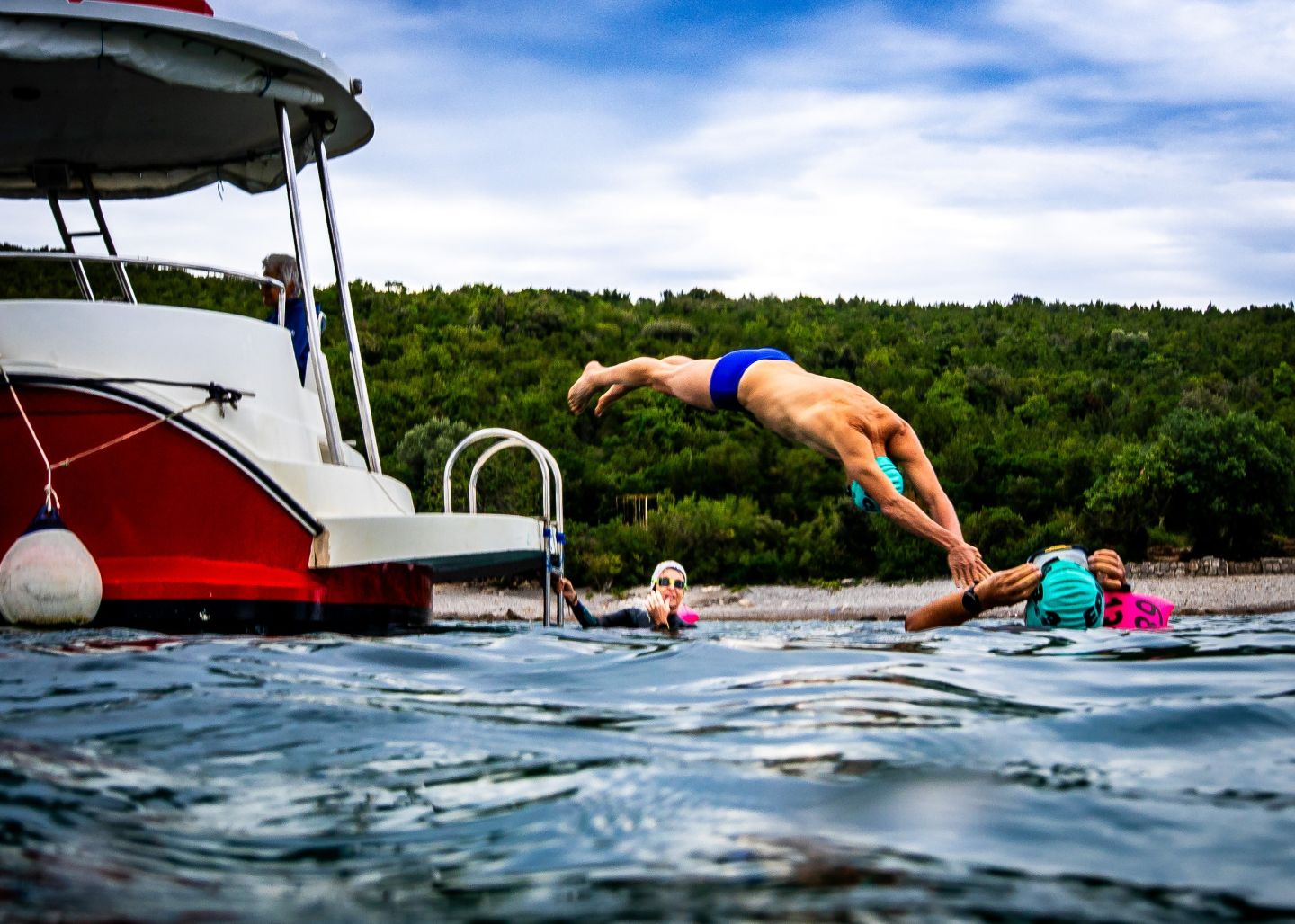
How to Transition From Endurance Swimming to Sprinting in Three Weeks
At the beginning of October, I completed UltraSwim 33.3 #10Montenegro – a four-day, 33.3km open water challenge. Even the shortest swim was a test of endurance, energy management and willpower.
Next week, I’m travelling to Sheffield for something very different: Swim England’s National Masters competition. Among other things, I’ve signed up for the 50m and 100m freestyle. I need to find my sprint gears – and fast.
To use an analogy from Swim Smooth, I have to turn off my steady-state diesel engine and find the high-speed petrol one – or to update the analogy, perhaps I need the electric engine. Sprinting requires power, intense focus, and perfectly executed starts and turns. I will need to switch mindset, too. Instead of managing my resources over hours, I’ll have to pour everything into one short explosive burst.
Developing and embracing this adaptability and versatility is a core motivation behind the creation of Renaissance Swimmer – it’s about having it all in swimming.
Making the Shift
Endurance swimming conditions you for long, steady efforts. It is about pacing, patience, and rhythm. It’s the opposite of what you need for sprinting. So how do you reset your body and mind in just three weeks? How do you ignite those fast-twitch fibres and sharpen your reactions?
First, it’s worth noting the value in including sprint training in your programme year-round. I did one sprint session per week leading up to UltraSwim – they build strength and power, and help you become more efficient in the water, which is important for long swims. Having done this, hopefully means that despite a couple of weeks away from sprinting due to the event, I haven’t forgotten how to do it.
Second, I have to recognise that a long-distance swim leaves lasting fatigue. I have to balance the desire for speed with the need for recovery. The plan, in brief, is as follows:
- Week 1 – easy swimming on all strokes, drills, and some very brief sprint efforts (avoiding anything that is too tiring).
- Week 2 – Longer sprint efforts but with lots of rest. Practise starts and turns.
- Week 3 – As week 2, but less distance and more sprints
- Throughout – focus on rest, nutrition and land-based exercises for mobility.
Training for Adaptability
In essence, there are two parts to developing the type of versatility that allows you to swim long distances and race in the pool. The first is how you structure your training over the year. The second is how you adapt your training in the short term to your next challenge.
Lessons for All Swimmers
Whether you’re training for a marathon swim or a pool sprint, the ability to switch gears is a valuable skill. It keeps your training fresh, your body balanced, and your mind engaged. It also helps prevent burnout and overuse injuries.
Here are a few suggestions to help you become a more versatile swimmer:
- Mix your training: Include both endurance and speed work, even if you lean toward one or the other.
- Challenge your comfort zone: Try events or distances you wouldn’t normally consider (both shorter and longer!)
- Listen to your body: Adapt your training based on how you feel, not just what’s on the plan, especially if you are recovering. Remember that sprints also take a lot out of you.
- Keep your next but one challenge in mind: If the challenge after the one you’re training for now requires different skills and gears, make sure you keep them ticking over.
Embrace diversity
Swimming is a wonderfully diverse sport. It offers solitude and community, adventure and competition, endurance and speed. By learning to change gear, we become more complete swimmers – and perhaps more resilient people.
Image: (c) UltraSwim 33.3 and John Ross Svensson – Practising pool racing dives from a boat

